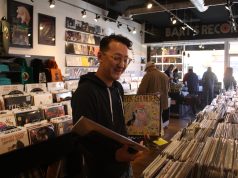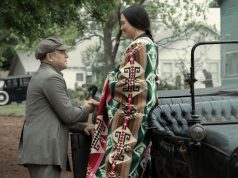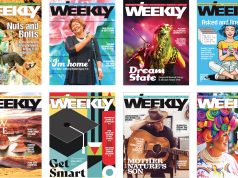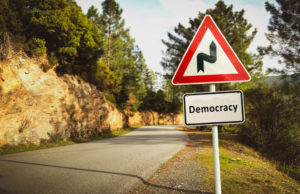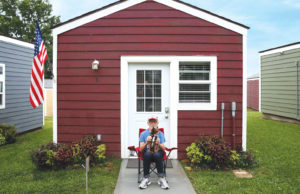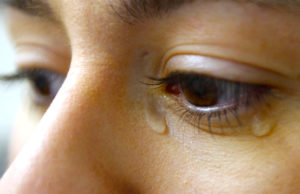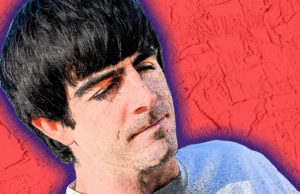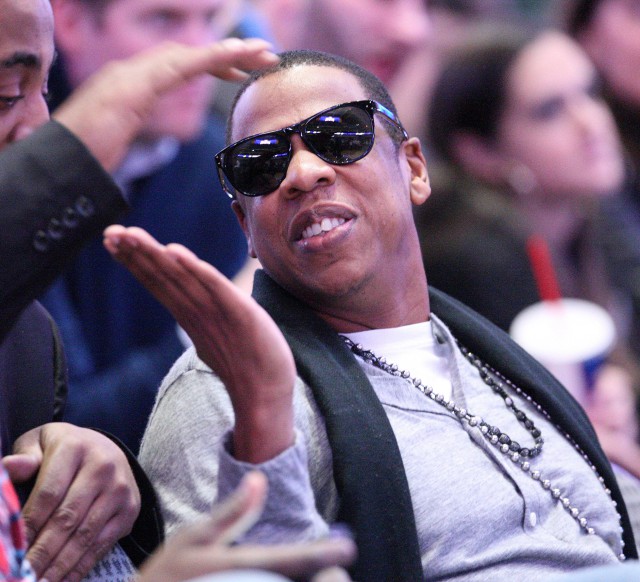
In 2008, when Jay-Z was named as a headlining act for
fiercely rock-centric Glastonbury Festival — a first for any hip-hop
performer, let alone one of rap’s epochal superstars — the island
nation erupted in furious debate. They’re giving a rapper domain over
one of rock’s elite events? Critics derided the decision as “a
disaster” and “tragic,” assailing Glastonbury itself as “contaminated.”
No less an eminence than
provided an antagonistic voice of dissent. “I’m sorry, but Jay-Z? No
chance,” Gallagher said in an interview with the BBC, citing the
festival’s “history of guitar music.”
To Jay (birth name:
the situation smacked of segregation. “That was the old guard standing
in the way, saying, ‘This is rock music. This is sacred,'” he said,
seated in his wood-lined corner office, a stone’s throw from
B-boy braggadocio is one thing, but a certain
performance anxiety set in when the rapper first laid eyes on
Glastonbury’s heaving masses: nearly a quarter-million festival-goers
camped out in a vast tent city surrounding the outdoor venue in the
British countryside. Around 70,000 of them — some openly hostile —
awaited his set.
“It felt like we were invading a country,” Jay said.
“‘Whoa. There’s a lot of people out there.’ I had never played before
that many people in my life. ‘What did we just do? This had better
work.'”
Not only did he manage to win over the crowd — thanks, in part, to his opening number, a cheeky cover of
his Glastonbury “game-changer,” Jay-Z suddenly became the most
internationally popular live performer in hip-hop history.
As a measure of his post-Glastonbury clout, this year Jay will take his show on the road to such top-tier summer music fests as
“In hip-hop, there’s not many great performers,”
Jay-Z acknowledged. “I look outside the genre, measuring myself against
others. I look at Madonna’s production and envy that. Daft Punk’s set,
I’m like, what the … And I look at the way U2 can command an
audience.
He’s not a dancer; he’s not jumping around. He’s having a conversation.
He’s using his stillness as movement.”
To be sure, such platinum-anointed MCs as
beyond their “urban” core audiences. Eminem remains a huge
international draw but has until very recently resisted the lure of the
festival stage. And West enraged fans when he headlined Bonnaroo 2008
by refusing to take the stage until just before sunrise.
But as
enough big hits, street cred, Twitter-worthy showmanship and mass
appeal to connect with the desert festival’s discerning audience. “I
don’t think there’s any other hip-hop artist who could headline
Moreover, at a precarious time in the live music biz, organizers are looking to Hovi Baby as a solution.
“Jay-Z is more than a rapper,” said Ebro Darden, programming director of
profile and the big intangible: People believe what he’s saying in his
music. He’s authentic.”
Time was when it was enough for Jay-Z, 40, to flex
his drawing power in ways that didn’t necessarily put him in dramatic
confrontation with the rock ‘n’ roll firmament.
The well-known facts: He’s topped the national album
chart 11 times in a 15-year career and created many of the most
anthemic street bangers of the modern hip-hop era: “Hard Knock Life
(Ghetto Anthem),” “Big Pimpin'” and last year’s “
among them. He retired from performing in 2004 after an ill-fated
co-headlining tour with R&B superstar R. Kelly fell apart
midstream, and assumed presidency of his label, Island Def Jam (before
the inevitable
in a hush-hush ceremony last year. Then he capped it all off by signing
one of the most lucrative contracts in the history of pop: a deal with
Live Nation worth
After erupting from
rough-and-tumble Marcy Housing Projects to break through as a recording
artist in 1996, Jigga’s initial efforts as a showman were probably
better intended than received. “All my early years? Forget it. I was a
horrible performer,” Jay said, admitting he learned it the hard way
from DMX during a co-headlining tour in 1998. “DMX tore me to pieces. I
remember being stunned.”
Through a combination of competitive urgency and the
kind of icy professionalism for which he has become known, Jay-Z
diagnosed what needed to be done. Namely, highlighting his nimble
lyricism by frequently rapping a cappella and executing blustery moves
like running through the audience while delivering rhymes that raised
the bar on DMX’s macho, shirt-off stage posturing.
“He had me really working. But I had to figure this
out,” the rapper continued. “If you want to be a headliner, you better
put on a headline show.”
That philosophy has meant giving up most live rap
acts’ typical indulgence — being accompanied by a two-track of recorded
music — in favor of touring with a 10-piece backing band (a
three-member horn section, two guitarists, keyboardists, two drummers
and backup MC Memphis Bleek). This shift is prompted as well by new
music that feels bigger and features a narrator who, as on “
In these new surroundings, Jay is careful to not
lose track of the chief difference between rocking an arena as a solo
artist and being just one part of the creative scrum at a big fest like
“At festivals, some people are there to see you,
some people are there to see the act before you, some people have no
idea who you are,” he said. “So how do you take that audience of all
those different people and make them focus on one point? That’s the
challenge.”
According to Tollett, festival organizers have wanted to book Jay for
as far back as 2003. But the idea really gained traction after the
rapper wowed the crowd at All Points West last year (a festival which,
like
Even more complicated, Jay’s megabuck contract is with AEG Live’s
biggest competitor, Live Nation, and the concert promoter would have to
first give its blessing.
“I thought, ‘He’s not going to be in 2010,'” Tollett
said. “Then we started talking and, actually, this is the one guy I bet
a lot of his crowd doesn’t go to
They want to see him in a high-end, reserved seat situation. And put in
a three-day weekend, I could imagine a lot of people saying, ‘I want to
see Jay-Z in that setting.'”
So the concert promoter made an unprecedented move:
“I called up and said, ‘Can your act that you have under contract play
our show?'”
At a time when music sales continue on the downward
spiral, and the metric for music industry success has dramatically
shifted to focus on performers’ touring revenues, Jay’s emphasis on his
live game is a matter of making serious dollars while also making sense.
“It used to be that making albums was most of what
you do and performing was like an afterthought,” he said. “But now,
it’s like 50-50. So the carriage may go in front of the horse now. I
may go make an album just so I can go and perform.”
In the meantime, there is one trapping of the
festival circuit that holds particular resonance for the MC. It has to
do with fans throwing up the “diamond cutter,” Jay-Z’s trademark hand
gesture.
“There’s nothing like seeing 100,000 diamonds,” said Jay.
In fact, the rapper’s use of the diamond gesture
resulted in a recent segment on National Public Radio questioning his
links to Freemasonry and subversive imagery called “Jay-Z: A Master of
Occult Wisdom?” Placing himself within the continuum that includes Led
Zeppelin, KISS and the Beatles — acts who have been accused of masking
dark, cultish ideas in pop trappings — Jay-Z’s face lighted up with a
huge grin.
“Yeah,” he exclaimed. “I know I’m a rock star now.”
———
(c) 2010, Los Angeles Times.
Visit the Los Angeles Times on the Internet at http://www.latimes.com/
Distributed by McClatchy-Tribune Information Services.


